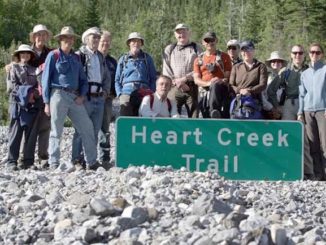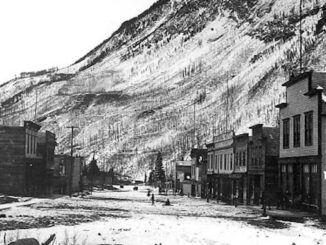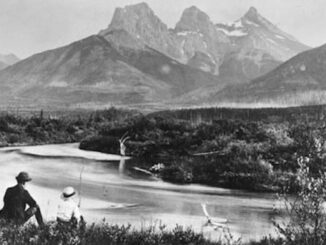“We have almost forgotten how strange a thing it is that so huge and powerful and intelligent an animal as a horse should allow another, and far more feeble animal, to ride upon its back.”
~ Peter Gray
The Canadian west was built on the backs of horses. In the mid-1600’s the earliest European fur traders and explorers arrived in what is now western Canada. By the mid-1700’s First Nation groups in Alberta and British Columbia had acquired horses, making hunting, travelling, and life in general easier for everyone. From about 1840 onward massive waves of settlers, from a variety of cultural backgrounds, converged on the west setting the stage for a transformation the likes of which the prairies had never seen. Throughout this period of radical change horses played an integral role in the lives of our ancestors, right up until the automobile arrived and profoundly changed things once again.
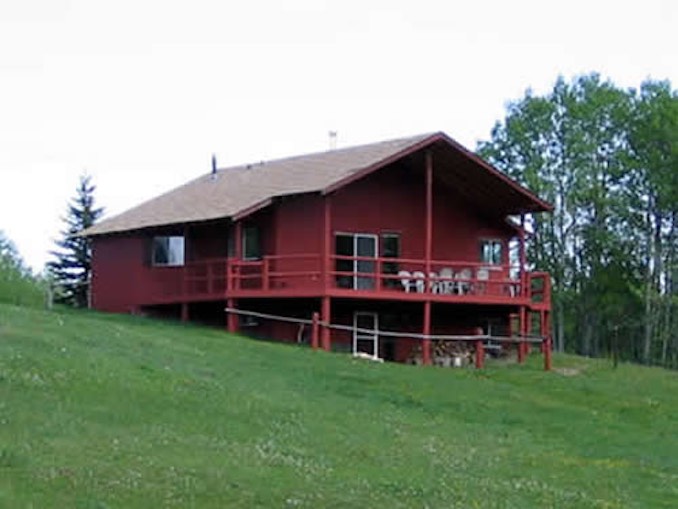
In the mountain parks horses were the preferred method of travel. The rugged country proved difficult to traverse, but horses were sure of foot and more than capable of hauling both rider and cargo, qualities that made them invaluable. I’ve always been a fan of those early pioneer stories of adventure and exploration in the high country. It seems you’d only ever get as far as a good horse would take you. Sid Marty was a longtime warden in Canada’s mountain parks and his book, Men For The Mountains, is a perfect example for these tales of tribulations and triumph, many of which feature a horse as the main character.
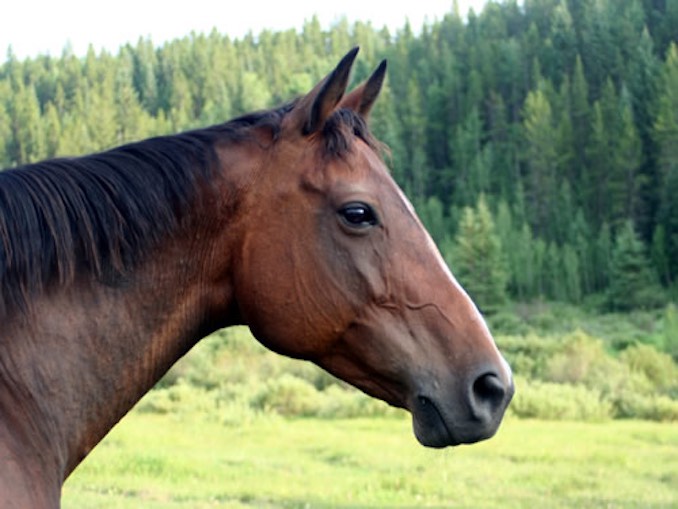
Recently I enjoyed a conversation with Mac Makenny, the owner and operator of Homeplace Ranch, about horses, riding, and their place in today’s modern world. The ranch is located southwest of Calgary, near the community of Priddis in the spectacular Rocky Mountain foothills. Mac has owned the ranch since 1974, but his ranching roots run mighty deep. Mac and his wife live together on the ranch, and his daughter is nearby, but the day-to-day operation falls mainly to him. Over the course of our conversation it became apparent that “home” was much more than just a name affixed to his ranching operation. Mac embodies every sense of the word and that permeates outward into everything he does. From meaningful conversations around the campfire, to the love and care he has for his horses, and even the day-to-day operation of the ranch, is all derived from this place he calls home.
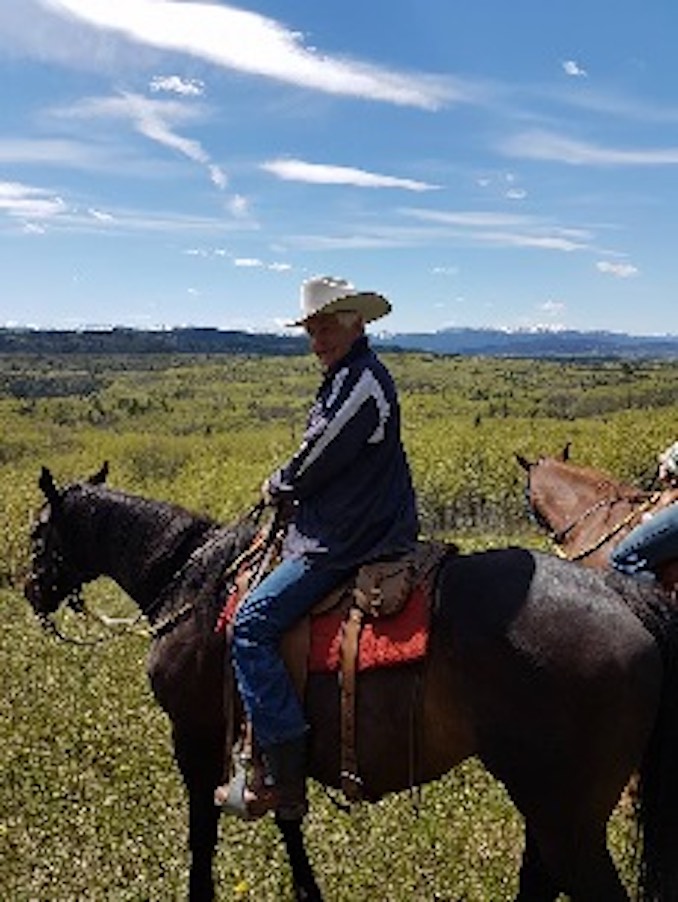
What follows are the highlights from our lively conversation,
Calgary Guardian: “After reading about the history of the Homeplace Ranch it’s obvious your ranching roots run deep. Is this why you continue the tradition of horse ranching today?”
Mac Makenny: “That’s a really good question. I grew up with it. My relatives established our tradition with horses. My great grandfather and granddad came up here from Nebraska in 1902 with a bunch of horses to sell. They were so impressed with the land that when they returned to Nebraska they sold everything and headed back north. My mother’s family had 11 kids who were born on a ranch west of Ponoka. My parents met when my dad, Bill, came to Canada on a hunting trip. He returned in 1935 and when he was preparing to leave he said, ‘Ruby, if you don’t find anyone you like better, I’ll be back next year to marry you’ and he did just that! After spending five years in the US Navy, my dad basically said, ‘I’ve spent years doing what I needed to do, but it’s time to do what I want to do’ and that was ranch and spend time in the backcountry, so in 1946 my parents and I, along with my aunt and uncle, moved to Jasper and started an outfitting business. Growing up in the mountains with 80 head of horse was a boy’s dream. Jumping ahead, I spent two years in the army and a number of years in the corporate world, but always wanted to get back to my roots. I wanted to own a guest ranch. I didn’t necessarily want to leave the corporate world, but was always drawn back to the horse end of the business. I found the land and bought it from the people who homesteaded it from 1912 onward. Growing up whenever there was a holiday we’d all get together at the homeplace, which was my grandfather’s farm. We would all be together under one roof with home-cooked meals and good company and that’s what we want to project to people who come to our ranch, hence the name.”
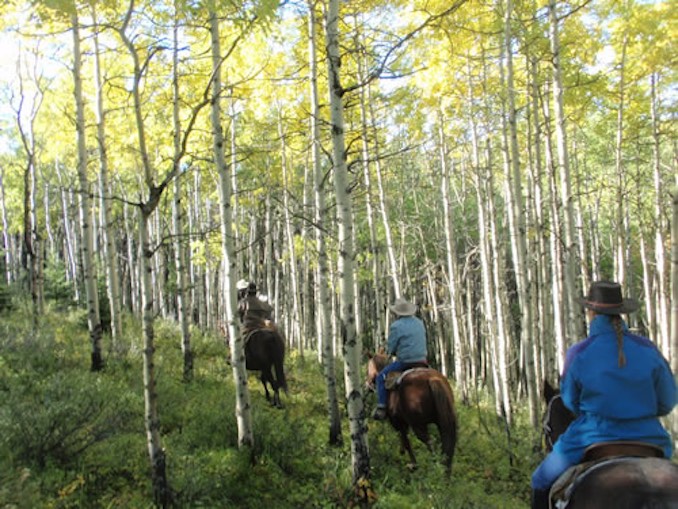
CG: “How many horses call the ranch home?”
MM: ” We have 28, but at this time of the year that’s about 20 too many! They take in about 25% more calorie-wise than during normal weather just to stay warm. Our horses have the freedom of 400 acres and we feed them as much hay as they want all winter. They also get oats every morning, it’s just part of my routine.”
CG: “Do you have any other animals or is it strictly just a horse ranch?”
MM: “Well there are a few others who live on the property now, so there’s a pot-bellied pig, some chickens, and we all have dogs. We were also in and out of the cattle business twice, but realized it’s just not where we wanted to be.”
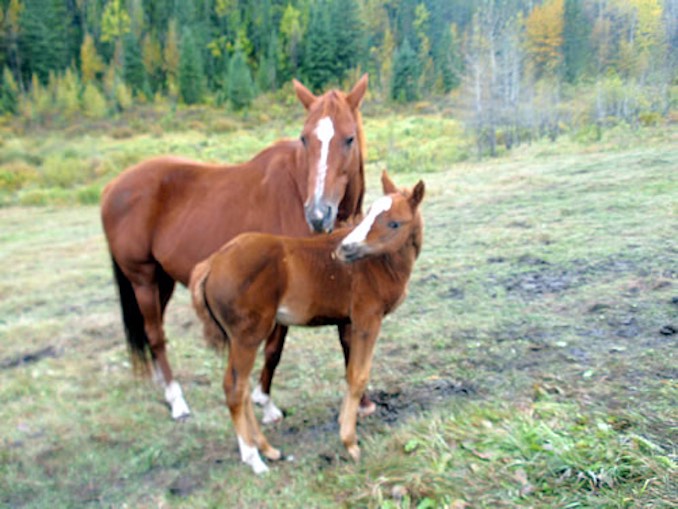
CG: “Travelling on horseback was the traditional mode of transportation through the Canadian west. What are the benefits to travelling via horseback in today’s modern world?”
MM: “There are probably two that really stand out to me. First of all you get a clear view of the country that you’re travelling through. You’re not travelling so fast that it flies by you, like in a car. You get to smell, hear, and see it. You’re close to the country you’re riding in. The smells are something truly unique, the horse, new buds on the trees, the crispness in the after a rainfall. It gives you the time to enjoy what’s really there. You’re part of nature when you’re riding.
Secondly, when you get on a horse the worries you had on the ground are gone and now you’re in a different zone. On a good horse your focus is with the animal. So you can’t be thinking about everything else that’s going on. It’s a freedom that frees you from other responsibilities, just getting away. It was Sir Winston Churchill who said, ‘There is something about the outside of a horse that is good for the inside of a man.'”
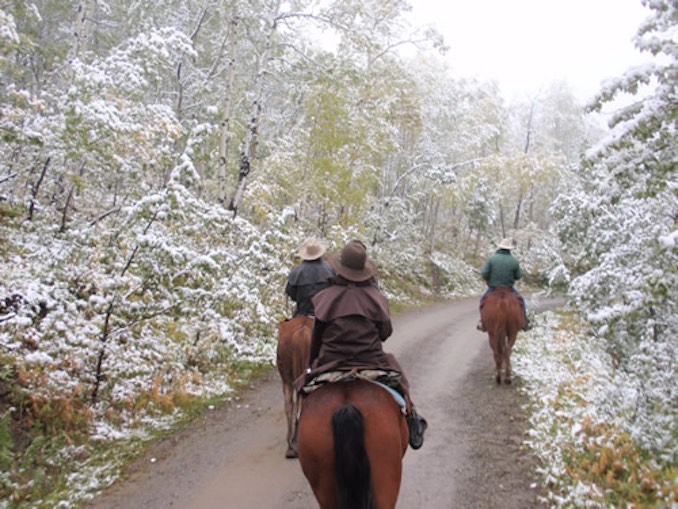
CG: “I know there are a lot of different options available to you, but what areas and/or trails do you typically use for riding?”
MM: “We have crown land to west and the south of the ranch, so that’s where we ride the most. Usually on Wednesday we’re out in Kananaskis Country, places like Gorge Creek, Volcano Ridge, Fisher Creek, Mesa Butte, Bluerock, basically that whole southwest part of K-Country. We’ve had guests come from all over the world and many have ridden in numerous places; most of them say that Alberta is some of the last pure country that’s left.”
CG: “What sets the Homeplace Ranch apart from other ranching/horseback riding outfits in southern Alberta?”
MM: “We’ve always had the attitude of getting back to the Homeplace name. We want people to feel at home and feel a part of what’s going on. We get them involved with understanding the horse, working with it, taking them into the arena, learning how to saddle, just really getting them involved and understanding the animal itself. Developing a bond with that animal. If you come multiple times you’ll always be on the same horse if the connection was there. A lot of our business is repeat business and we feel that’s partly due to the bond created between horse and rider.”
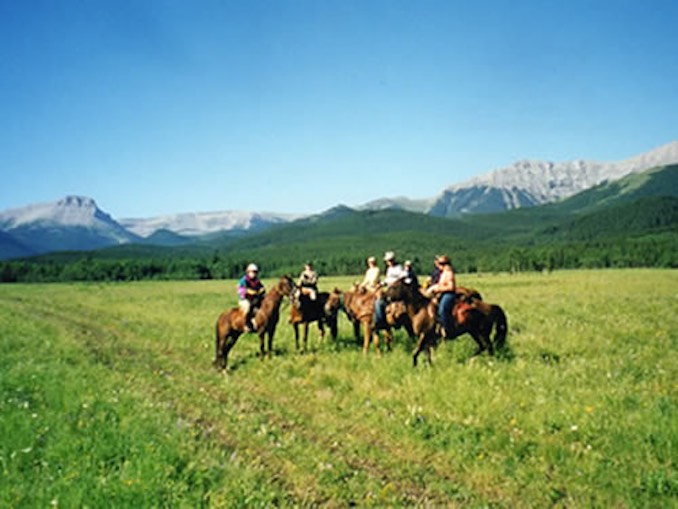
CG: “In addition to what you’ve already told me, what can your guests expect from a day of horseback riding with you?”
MM: “At the end of the day I want to be sure the guests understand the history of the ranch and what went into building it. Many of the old buildings and corrals are still there and we’ll ride past them. I like to tell them stories about the people that came before and what was required in those early days.”
CG: “Horses are large animals and many people have a fear of them. What can you do to alleviate these fears and reduce anxiety for your guests?”
MM: “Sports Illustrated did a survey about 25 or 30 years ago. The question was, ‘what is the one sporting event you’ve never done but want to do?’ Horseback riding was the number one answer. You’re right, people can be afraid for all those reasons you mentioned. Horses don’t stay and fight, they flee from predators. So if something spooks them they can run right over you, even if they love you to death, and that is cause for concern for many folks. I like to start by bringing people to the edge of the arena, have them take three deep breaths, stand quietly for two minutes, and just watch how the horses interact with each other. You’ll start to see some characteristics stand out. Most horses get along with one another, but some don’t, so they’re a lot like humans that way. I take it slow and try to develop that bond we talked about. After watching we talk about how to approach a horse. A common mistake is reaching for its head, don’t do that. You want to approach the left shoulder. It’s a neutral area and most people that work with horses work from the left side, so it’s been trained that way. Horses can’t see directly in front of them or right around to the back of it’s tail, so it’s important to avoid touching in those areas. Don’t walk up and touch a horse until you can see its eye. Talk to him first so he knows you’re coming and ensure he’s awake. You don’t want to startle them. These are a few techniques I use to help ease that fear.”
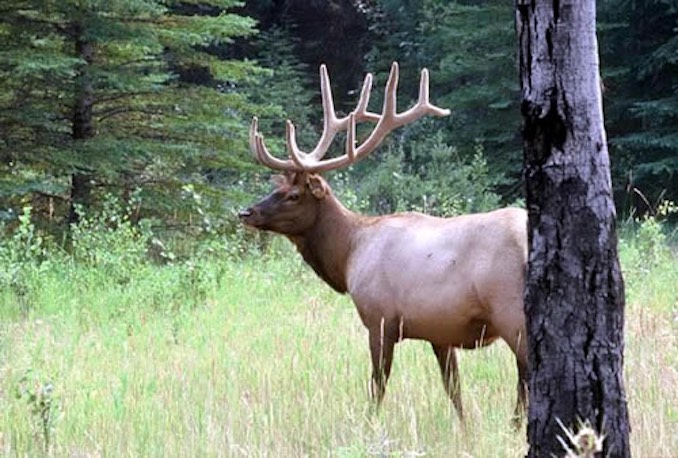
CG: “What’s the most difficult skill to learn to become a competent horseman?”
MM: “I love this question. I learned this from a 15-year-old kid named Davie, when I was about 70 years old. He came over with his dad from Youngstown, Alberta. I asked him, ‘what’s your philosophy for working with a young horse?’ He responded with, ‘give them time to figure it out and to know when they’ve got it.’ It sounds simple, but it’s not an easy task. Especially letting them know when they’ve got it. The science is giving them the time to figure it out, but it’s an art knowing when they’ve got it. Don’t rush. You don’t want to make a mistake because you’re in a hurry.”
CG: “I saw that you do a Wine & Beer Ride. As a fan of craft beer this sounds pretty awesome. What does this tour look like? Which brewery do you use for the local beer?”
MM: “Yes this tour is a bit different than our usual rides. I am a big fan of Big Rock. They were my first sponsor when I played polo and they were just starting out in Okotoks. They make a great beer, so that’s what I typically use. I used to try to do the tasting on the trail, but now we wait until after. Once we’re back on the ranch and the horses are taken care of, it’s always important to take care of your horse before taking care of yourself, then we can enjoy a beer. Our tack room is very nice and is the perfect place to start a conversation.”
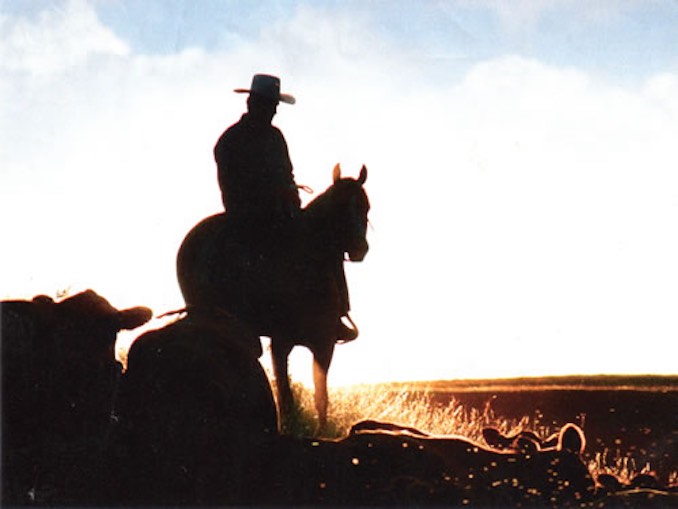
CG: “Considering how many years of experience you have, I am sure you have a number of memorable experiences. Would you mind sharing one or two stories that are particularly exciting, memorable, interesting, funny etc?”
MM: “We did a ten day trip meeting up with another outfitter and exchanging guests half-way through. This was the end of September and the weather was incredibly beautiful with striking colours. There were no bugs and we had a young crew and young guests. Everything was just great. We’d hit camp and they’d have it setup in no time at all. At the end of the first five days when we met the other outfitter to exchange guests we ended up with much older guests. It started to snow heavily. We were pushing through snow in places as high as the horse’s breasts collars. Everything was wet and cold and the horses were miserable. That was the turning-point for me where I decided I wanted a fixed-roof facility from that point on. No more overnights in canvas tents. I guess you could say we got soft HaHaHa! The other story that comes to mind was with an Italian guest named Ferruccio Ferragamo, son of the famous designer Salvatore. His wife was an accomplished horsewoman, but he’d never ridden before. Finally, while his wife was off riding with another group I convinced him to try. There was a bit of a language barrier between us and he was pretty concerned about seeing Grizzlies, but he gave it a go. The thing that stuck out the most about him was his ability to make everyone around him feel comfortable and at ease, which isn’t an easy skill to master.”
I am positive that if we had been sitting around a campfire, sipping on a cold beer, the stories would have gone on into the wee hours of the morning, with me hanging on every word. Regrettably our conversation came to a close, but not before Mac extended an invitation out to his ranch to see the place in person and meet the horses. How could I say no? After our discussion the place already felt like home.
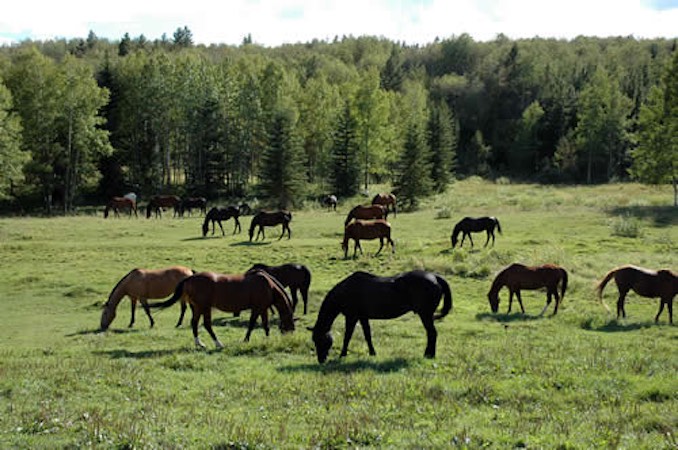
I would just like to take this opportunity to thank Mac Makenny for sharing his story with me. Without him none of this would have been possible. If you’re looking to experience the Alberta landscape from a new perspective you should consider the Homeplace Ranch. I know you’ll be in good hands.
***
About this column:
Wild Jobs is a running series that focuses on people in outdoor-related professions. It provides a brief snapshot of their career and the duties that it entails. Please see my previous post, Wild Jobs Part Eleven: Snow Groomer to learn more.


